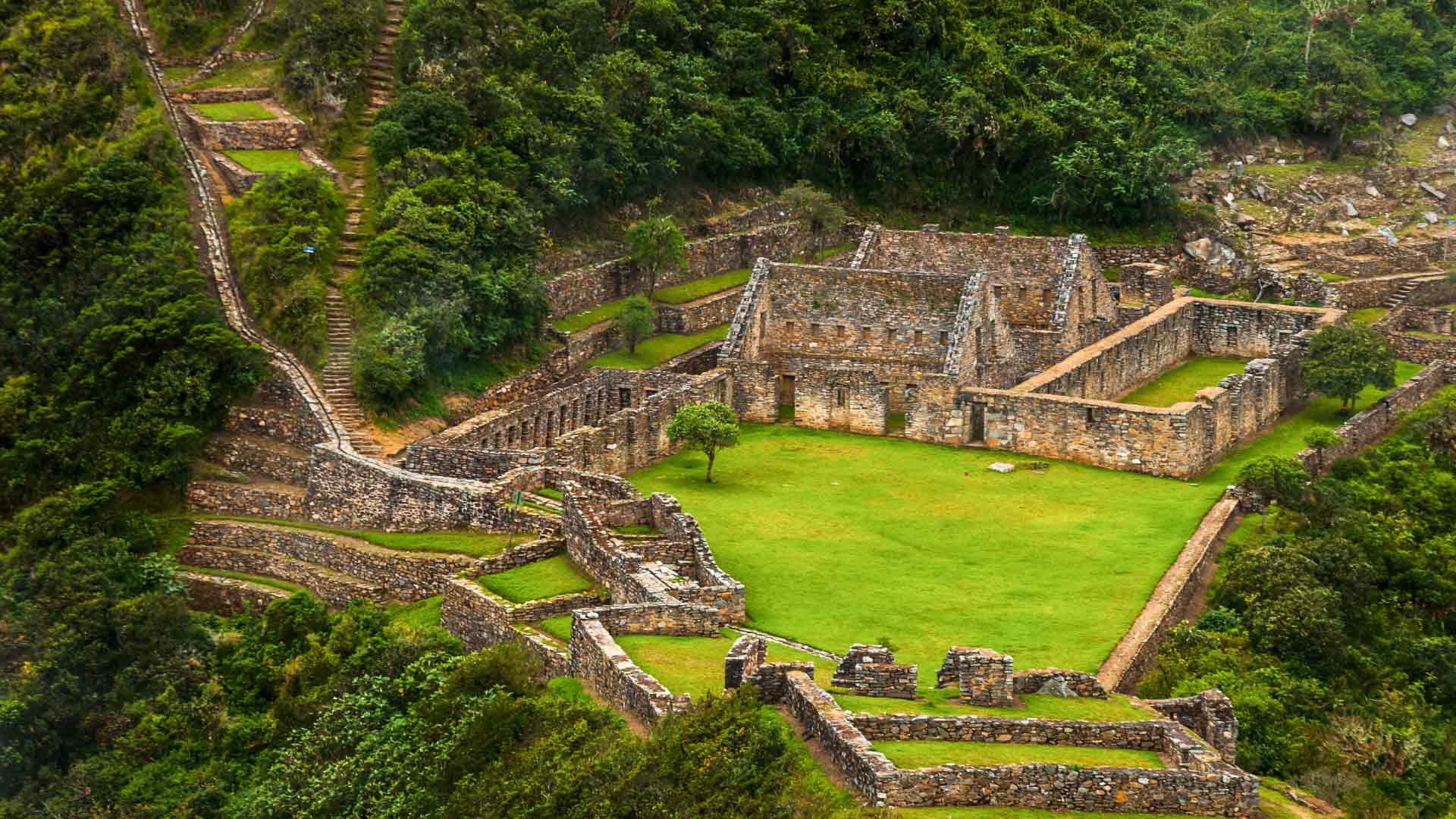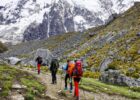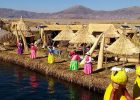Choquequirao, the “sacred sister” of Machu Picchu, is an impressive Inca archaeological site located in the Apurímac Valley, at approximately 3,050 meters above sea level. To get there, many travelers opt for the 4-day Choquequirao trek, departing from the town of Cachora.
A journey that allows visitors to immerse themselves in unique Andean landscapes and observe a great variety of flora and fauna. The best time to visit this impressive archaeological complex is between April and October, when the weather is drier and trekking conditions are ideal.
Less crowded than Machu Picchu, Choquequirao offers an unforgettable experience for adventurers and history enthusiasts who wish to delve into the majesty of the Inca civilization.
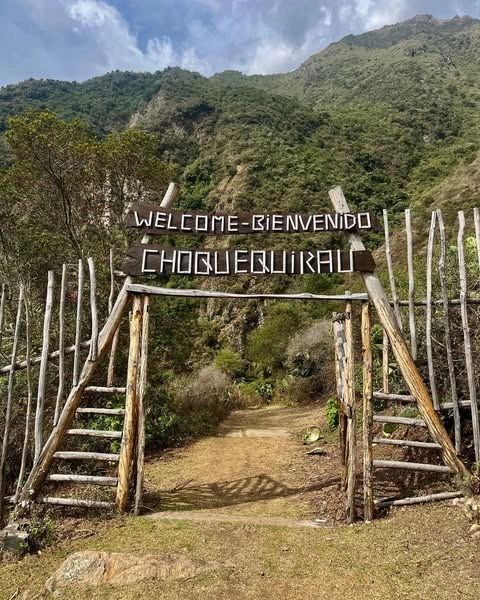
History and Meaning of Choquequirao
What Choquequirao Means
The name “Choquequirao” comes from Quechua and translates to “Cradle of Gold.” Although there is no consensus on its exact origin, some experts suggest that the name refers to the cultural wealth and grandeur of its architecture and location.
Within the Inca Empire, Choquequirao is believed to have been a site of great strategic and religious importance. Surrounded by mountains and jungle, its name reflects its status as an important ceremonial site and its value in the Andean worldview. Over the centuries, this city has maintained an aura of mystery and fascination.
History of Choquequirao and Its Discovery
Choquequirao was built during the height of the Inca Empire, probably under the reign of Pachacútec or one of his successors, as an important administrative, ceremonial, and military center. Its strategic location in the steep mountains of the Apurímac Valley allowed it to control trade and routes to the lower jungle, as well as serve as a refuge from enemy incursions.
After the arrival of Spanish conquistadors in the 16th century, Choquequirao was abandoned and forgotten for centuries. Although some accounts mention its existence, it wasn’t until the 19th century that explorers like Hiram Bingham began to take an interest in the area. However, the site remained largely unnoticed at the time, only being formally rediscovered in the 20th century by archaeologists and researchers.
Today, Choquequirao is recognized as one of the most significant archaeological sites in Peru, comparable in importance to Machu Picchu. It continues to be the subject of archaeological studies and research. Despite its recognition, it remains a less-visited destination due to its difficult access, which gives it an air of mystery and exclusivity for those who venture to explore it.
Historical and Cultural Importance of Choquequirao
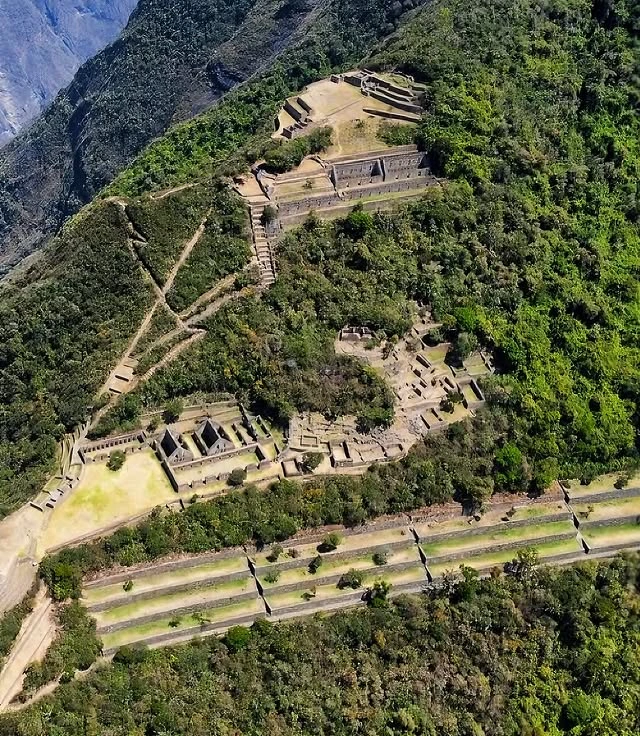
Choquequirao is a site of great historical and cultural relevance, representing Inca resistance against the Spanish invasion. It is believed that, in addition to being a ceremonial center, the complex served as a refuge for the Inca nobility during the last years of struggle against the conquistadors. Its strategic location in the mountains provided protection and access to the region’s natural resources.
The complex stands out for its agricultural terraces, ceremonial plazas, and temples, reflecting the architectural expertise of the Incas. Furthermore, its design follows principles of Andean worldview, where the apus (mountain spirits) were revered, and the structures harmoniously integrate with the natural landscape.
Choquequirao is not only a testament to Inca engineering and organization but also a symbol of Andean culture and its deep connection with nature. Its preservation is crucial for understanding the legacy of the Inca Empire and its resilience in the final years before colonization.
Location of Choquequirao
Location and Main Access Points
Choquequirao is located in the Cusco region, in the Santa Teresa district, specifically on the slopes of the Apurímac River. The archaeological site sits at an altitude of approximately 3,050 meters, offering breathtaking views of the surrounding valleys and the region’s towering mountains.
To reach Choquequirao, travelers must trek, as there are no vehicle roads or train access due to its remote location and preservation efforts.
- The main departure point for the trek is Cachora, a small town located about 30 kilometers from Cusco.
- From there, trails lead through mountainous landscapes and jungle, offering a unique experience for adventurers.
- The trek can take between 4 to 6 days, depending on the route and group pace.
Altitude and Geographical Features
The citadel of Choquequirao is located at 3,033 meters, in the Andean region of Cusco. It is nestled in a mountainous area, surrounded by towering peaks and offers stunning views of the Apurímac River canyon. This location provided strategic advantages in terms of defense and access to natural resources.
However, its rugged geography and high altitude make access challenging, as the terrain is steep, and the trekking routes require good physical preparation. Despite these challenges, the journey to Choquequirao rewards travelers with spectacular landscapes and the opportunity to explore one of the most remote and fascinating cities of the Inca Empire.
How to Get to Choquequirao: Access Routes and Options
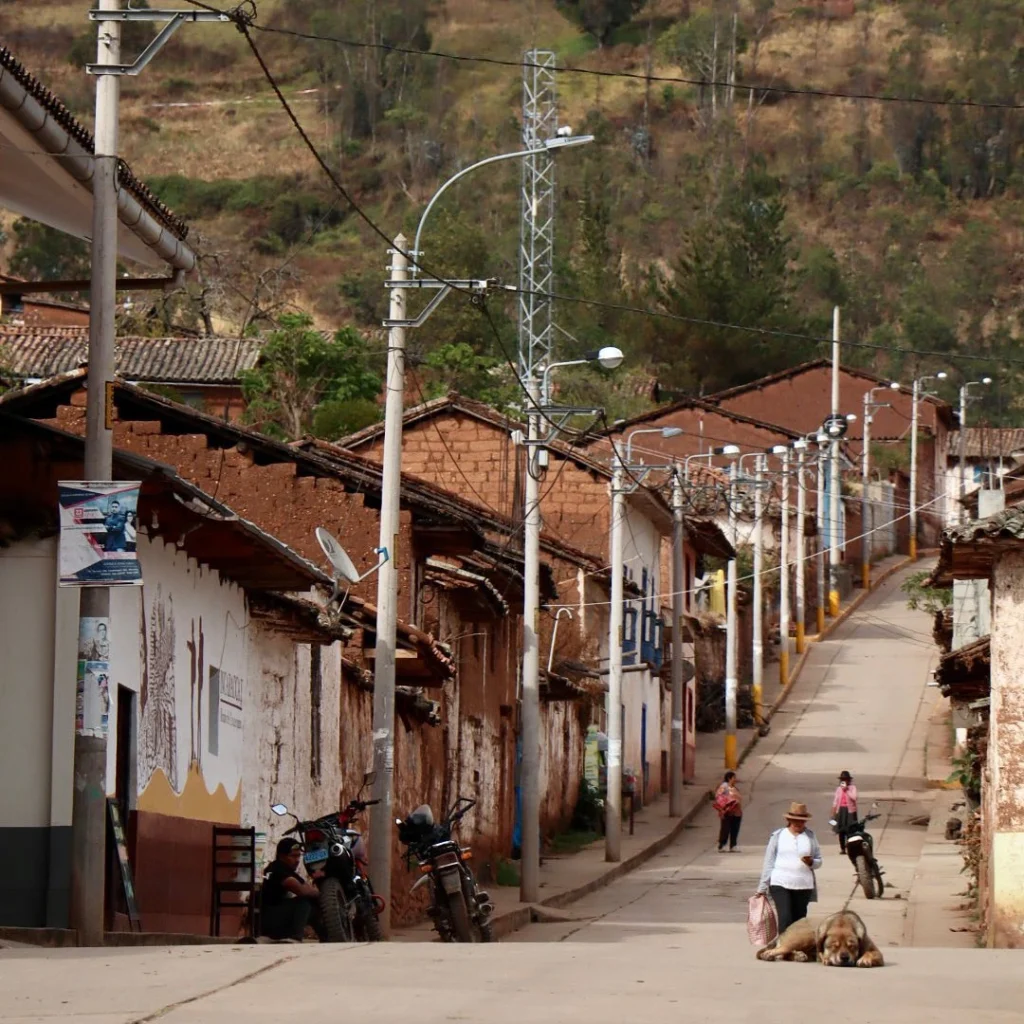
Classic Trekking Route to Choquequirao
The most popular route to (4 day Choquequirao hike) starts in Cachora, a small town 30 km from Cusco. The trek takes two days of intense hiking, crossing valleys, mountains, and the Apurímac River.
During the journey, travelers must descend to the bottom of the canyon and then climb back up to reach the citadel. Along the way, campsites allow trekkers to enjoy the natural environment and acclimatize to the altitude.
Pros:
- The most commonly used route, well known by local guides.
- Offers an authentic trekking experience through unique Andean landscapes.
- Allows observation of the region’s biodiversity and stunning natural surroundings.
Cons:
- The altitude may cause altitude sickness if precautions are not taken.
- The trek is challenging, with steep ascents and descents, requiring good physical fitness.
- The round-trip trek can be exhausting, taking between 4 to 6 days to complete.
Alternative Trekking Route via Huanipaca
Another less traveled option is the Huanipaca route, which also offers spectacular views and allows travelers to experience a quieter side of the trek to Choquequirao. Although it is less popular, this route is equally challenging and requires preparation and experience in mountain trekking.
Mollepata Route: Another Way to Choquequirao
The Mollepata route is an option for those seeking a more adventurous and unconventional experience. This path takes hikers through areas of great biodiversity, with views of snow-capped peaks and closer interaction with the local flora and fauna.
Choquequirao to Machu Picchu Trek
For those looking for an epic journey, there is the option to trek from Choquequirao to Machu Picchu, a hike of approximately 8 to 10 days. This route is demanding but offers the opportunity to connect two of the most important Incan cities, experiencing the Qhapaq Ñan, or Inca Trail, at its finest.
Main Attractions of Choquequirao
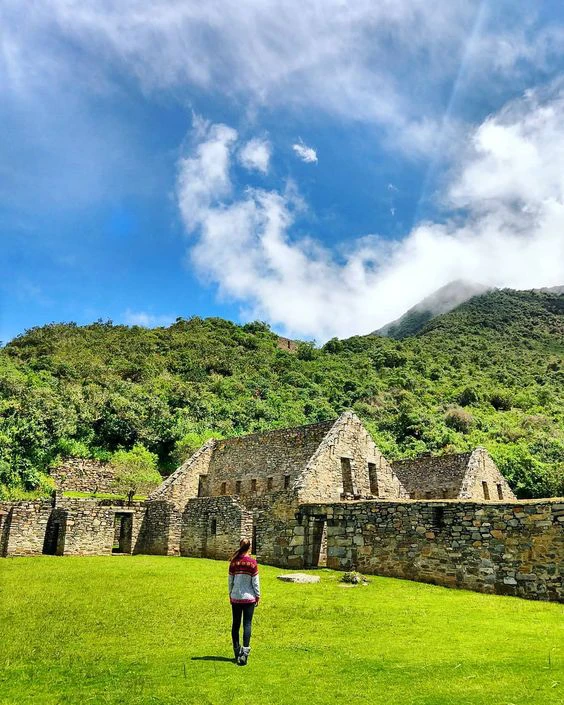
The Hanan Temple
Located at the highest part of Choquequirao, Hanan Temple was a ceremonial space dedicated to offering tributes to the Incan gods, especially Inti, the Sun God. This temple stands out for its architectural design, which includes finely carved walls and symbolic details alluding to the Incas’ spiritual and political power.
From this point, visitors can enjoy breathtaking views of the mountainous landscape surrounding the citadel, reinforcing its sacred connection.
The Storehouses or Qolqas
The qolqas were essential at the time, serving as storage facilities for food, tools, and agricultural products. Designed with natural ventilation, these structures optimized the conservation of goods in the high-mountain climate.
The storehouses demonstrate the Incas’ advanced engineering knowledge and their ability to ensure self-sufficiency in remote communities.
The Main Plaza and Surroundings
The Main Square was the ceremonial and social core of Choquequirao. This open space is surrounded by terraces, temples, and residences, reflecting its central function in the life of the citadel. Public events, religious ceremonies, and administrative meetings were held here. Its strategic design also facilitated visual communication with other parts of the complex.
The Entrance Gateways
The gates leading into Choquequirao are an example of Incan architectural skill. These entrances not only provided protection but also served as control points and welcoming areas. Their design incorporates symbolic elements that highlight the site’s ceremonial and strategic importance.
The Ceremonial Ushno
The ushno is a ritual platform built at the highest point of Choquequirao. This space was used for ceremonies in honor of the gods and Pachamama. From the ushno, visitors can appreciate panoramic views that visually connect with the valley and other sacred sites, representing the union between the spiritual and earthly worlds.
House of the Priests
This enclosure housed the religious leaders responsible for the ceremonies and was always located near the temples, highlighting its importance in Choquequirao’s spiritual organization. The structures display a simple yet functional design, reflecting the respect and dedication to sacred activities.
Sacred Terraces
These agricultural terraces not only served productive functions but also had spiritual significance. Ceremonies and offerings to Pachamama were held here. Their efficient design maximizes water capture and demonstrates the Incas’ ability to adapt to challenging environments.
Llama Terraces
One of the most unique features of Choquequirao is its terraces decorated with llama figures, symbols of prosperity and spirituality. These images, made with white stones embedded in the terraces, celebrate the special relationship between the Incas and these animals, which were essential for the economy and religion.
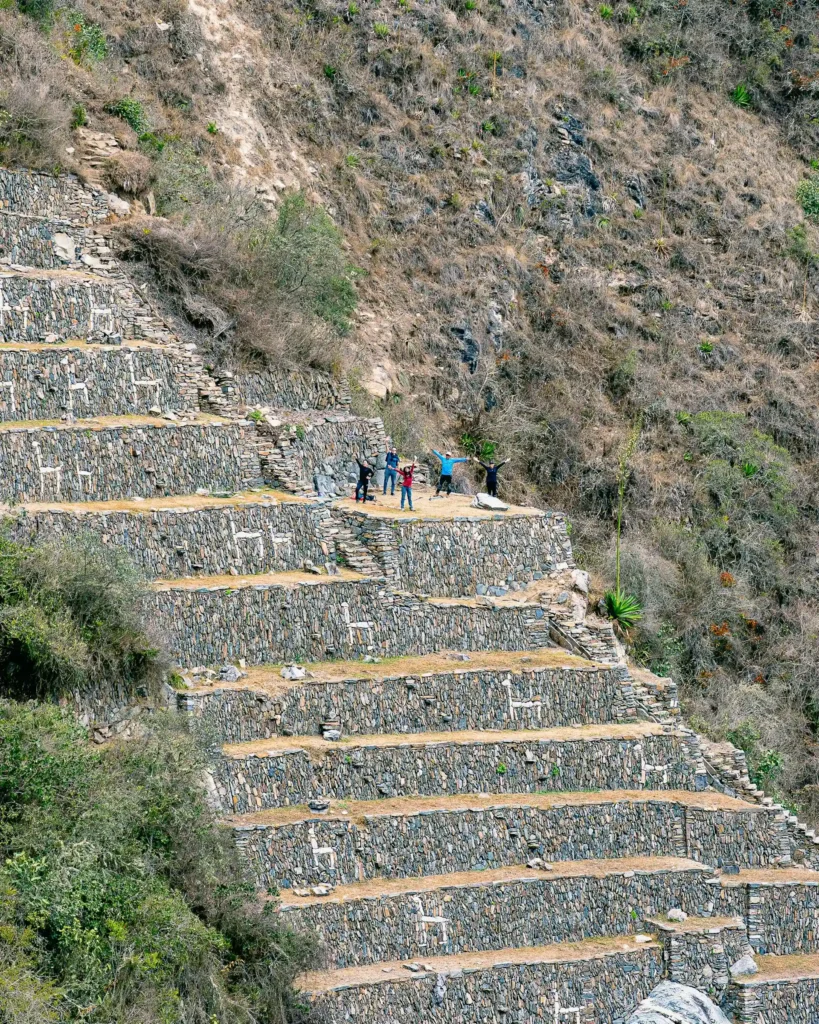
Paraqtepata and Phaqchayoq Terraces
These terraces showcase the Incan agricultural ingenuity, with steeply adapted terraces that maximize productivity and water management. Besides their agricultural function, these terraces represent harmony between engineering and nature.
Climate and Best Time to Visit Choquequirao
Climatic Conditions in Choquequirao
The climate in Choquequirao varies by season.
- May to September (dry season): Sunny days and cold nights, ideal for trekking with clear views.
- November to March (rainy season): Frequent rain, making trails slippery and access more difficult.
If you plan to visit, the dry season is the best option for a safer hike and spectacular landscapes without weather interruptions.
Ideal Season for Trekking
The best season for trekking to Choquequirao is May to September, during the dry season. In these months, the trails are in better condition, without the mud and humidity of the rainy season, making the journey safer and more comfortable.
Additionally, the panoramic views are spectacular, as the sky is usually clear. Travel during this season for an unforgettable experience with fewer risks—this is the perfect time to visit.
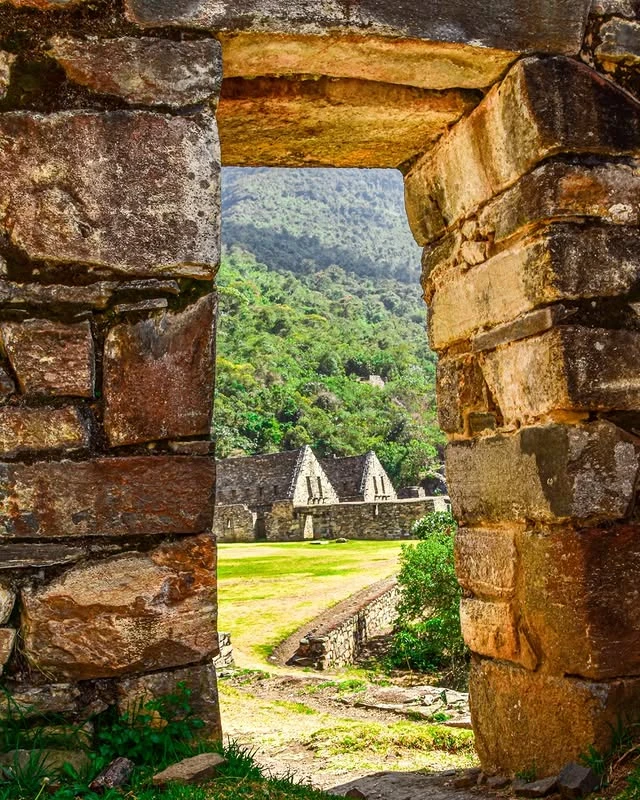
Flora and Fauna in Choquequirao
Diversity of Native Flora
Choquequirao is home to a great variety of plant species, including native trees and flowers such as:
- Cantuta
- Bromeliads
- Orchids
- Queñua trees
- Ferns
- Mosses
Local Fauna and Notable Species
Visitors to Choquequirao can observe a variety of wildlife, offering a close connection with the biodiversity of the Andes:
- Andean Condor
- Spectacled Bear
- Eagles
- Hummingbirds
- Deer
- Vizcachas
- Butterflies
Tips for Visiting Choquequirao
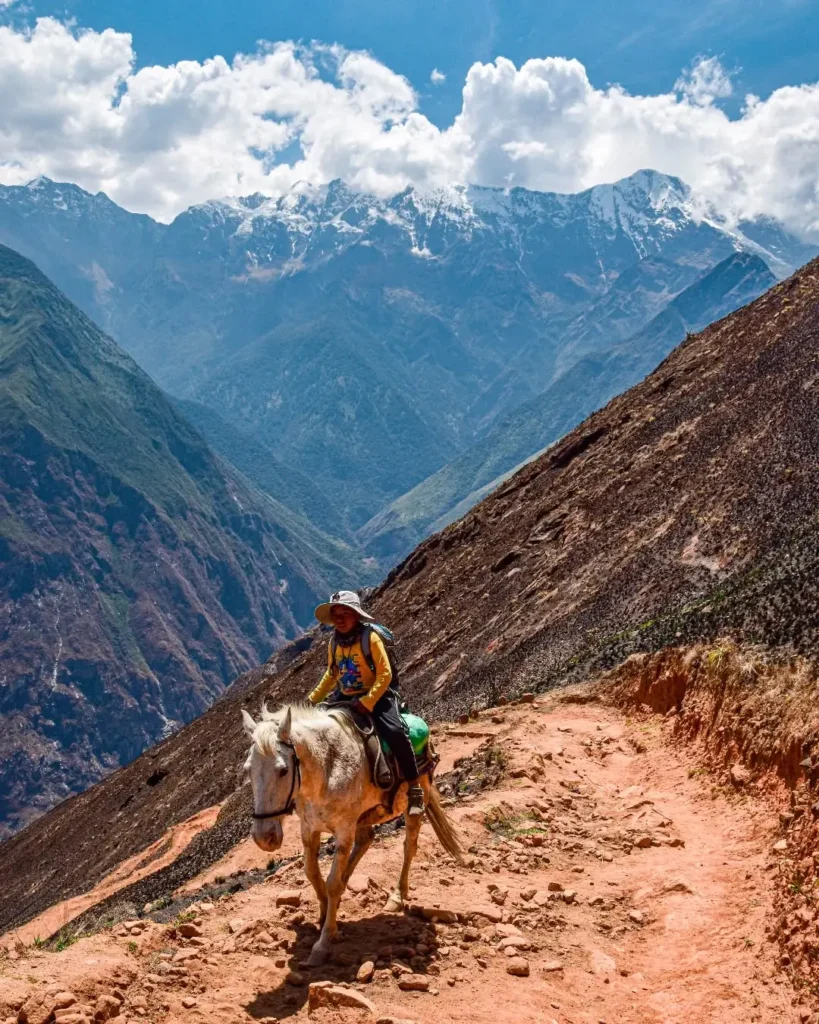
What to Bring for the Trekking
- Comfortable, lightweight clothing for the day.
- Warm jacket for cold nights.
- Sunscreen and sunglasses.
- Sufficient water or a portable water filter.
- High-energy foods like nuts or granola bars.
- Sturdy trekking shoes.
- Trekking pole.
- Basic first aid kit.
- Insect repellent.
Travel Recommendations
The trek to Choquequirao is demanding, so keep these recommendations in mind:
- Respect nature and follow guidelines to preserve the site.
- Be in good physical condition before the trip.
- Dedicate at least 4 days to complete the trek.
- Check weather conditions before departure.
- Hire a local guide for safety and insights.
- Bring cash, as there are no ATMs along the route.
Comparison Between Choquequirao and Machu Picchu
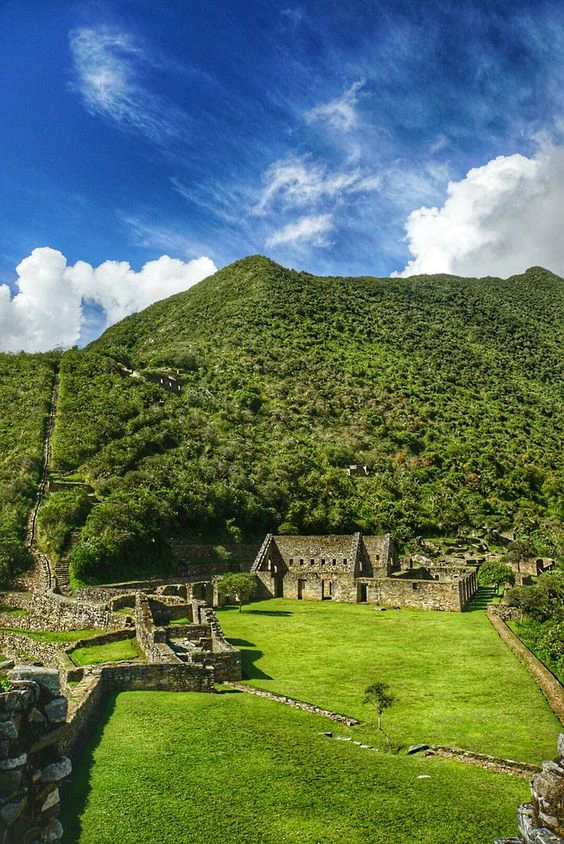
Differences Between Choquequirao and Machu Picchu
While Machu Picchu is world-renowned and receives thousands of visitors each year, Choquequirao is a less-visited site, allowing for a more intimate and authentic experience.
Main differences
Choquequirao is less known but equally impressive.
Access:
- Machu Picchu has train and bus transportation.
- Choquequirao requires a demanding multi-day trek.
Tourist influx:
- Machu Picchu receives thousands of visitors per day.
- Choquequirao has fewer visitors, offering greater tranquility.
Environment:
- Machu Picchu is more developed for tourism.
- Choquequirao is immersed in nature, providing a more rustic experience.
Historical importance:
- Both are significant, but Machu Picchu is a global icon.
Which One to Visit: Choquequirao or Machu Picchu?
Both sites have their charm and offer unique experiences.
- Choquequirao: Ideal for those seeking adventure, nature, and solitude.
- Machu Picchu: Perfect for a more accessible and internationally recognized trip.
Information on Tours and Costs for Choquequirao
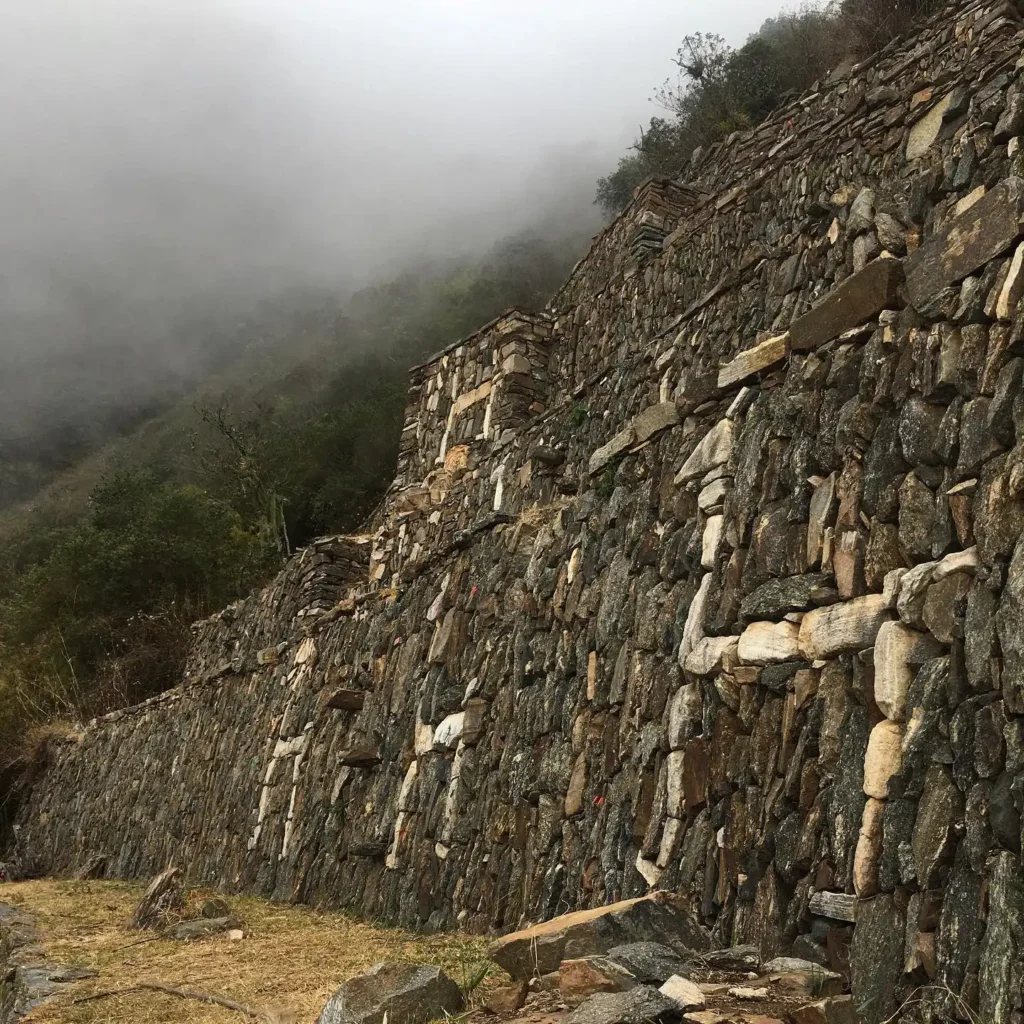
Entrance Fee to Choquequirao
Admission fees to Choquequirao vary depending on the nationality and age of visitors:
National tourists:
- Adults: S/ 40.00
- Students: S/ 25.00
- Children up to 12 years old: S/ 15.00
- Children under 3 years old: Free entry
Foreign tourists:
- Adults: US$ 15.00
- Students: US$ 10.00
- Children up to 12 years old: US$ 5.00
- Children under 3 years old: Free entry
Tour Prices from Cusco
Tours to Choquequirao from Cusco include transportation, a guide, and meals. Prices vary depending on the type of service and the duration of the tour:
- 4-day, 3-night tour: Approximately US$ 790 per person.
- Group tour: Prices vary depending on the operator and the number of participants, with groups of 12 to 15 people.
It is recommended to contact local tour operators for updated information and specific details on available tours.
Tour Options: 4-Day Tour to Choquequirao and Machu Picchu
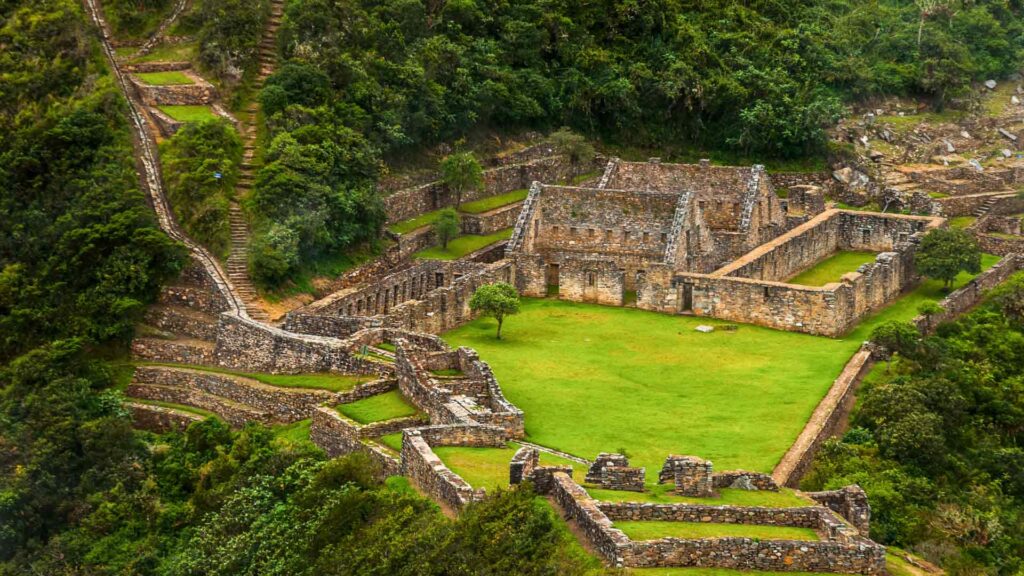
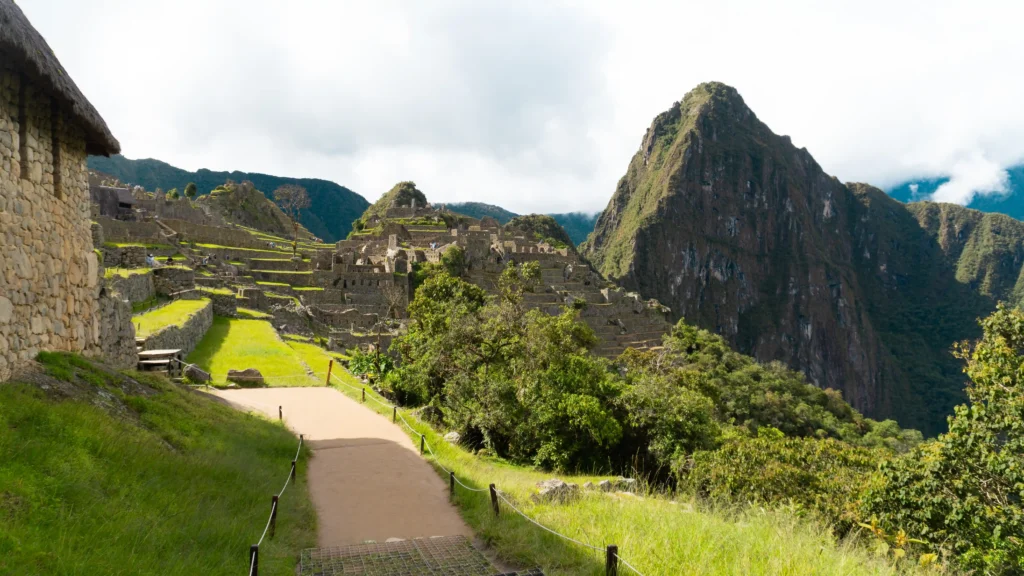
Some agencies offer combined 4-day tours that include Choquequirao and Machu Picchu. This option is ideal for those who want to visit both sites in a single trip.
Duration: 4 days and 3 nights
General itinerary:
Day 1:
- Departure from Cusco by bus to the trekking starting point.
- Hike to Choquequirao, with stops for lunch and rest.
- Overnight at a campsite near Choquequirao.
Day 2:
- Full day exploring Choquequirao, visiting its main attractions: Hanan temple, sacred terraces, and ceremonial plazas.
- In the afternoon, free time to continue exploring or rest.
- Overnight at the campsite.
Day 3:
- Trekking to the town of Aguas Calientes, en route to Machu Picchu.
- Arrival in Aguas Calientes, with free time to rest or visit the town.
- Overnight in Aguas Calientes.
Day 4:
- Visit Machu Picchu in the morning.
- Return to Cusco in the afternoon, ending the tour.
Includes:
- Transportation from Cusco to the trekking starting point.
- Professional guide for the entire journey.
- Accommodation in campsites and hotels.
- Entrance tickets to Choquequirao and Machu Picchu.
- Meals during the trek (breakfasts, lunches, and dinners).
Recommended for:
- Adventurers who want to combine the experience of Choquequirao and Machu Picchu in a single tour.
- People in good physical condition due to the trekking challenge.
This tour is an excellent option for those seeking a unique experience, combining two of the main archaeological destinations in the Peruvian Andes. For more information, contact us on WhatsApp at +51 969 778 408, and we will help you organize your trip.
